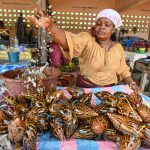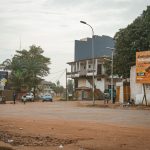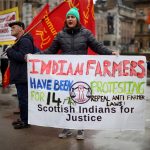[ad_1]
EXPLAINER
Sierra Leone, one of West Africa’s smallest but oldest states elects a new president and government this June. Here’s what you need to know about the parties, leaders and key election issues.
Freetown, Sierra Leone – On June 24, 2023, 3.4 million Sierra Leoneans will head to the polls to vote for a new president. This will be the fifth election since the brutal 10-year civil war — and it is expected to follow the peaceful and somewhat democratic nature of its four predecessors.
Two familiar candidates are competing to lead this country of 8.4 million people. The incumbent, President Julius Maada Bio, is seeking re-election and has promised to prioritise improving access to public education and boosting agricultural production.
Samura Kamara, the runner-up in the last presidential election of 2018, is the other candidate for the nation’s top role.
![Julius Maada Bio, president and ruling party candidate in Sierra Leone [Al Jazeera]](https://www.aljazeera.com/wp-content/uploads/2023/06/INTERACTIVE-BIO-1686646544.png?w=770&resize=770%2C770)
![Samura Kamara, opposition candidate in Sierra Leone [Al Jazeera]](https://www.aljazeera.com/wp-content/uploads/2023/06/INTERACTIVE-KAMARA-1686646556.png?w=770&resize=770%2C769)
Alongside the presidential poll, Sierra Leone will also hold parliamentary and local council elections. The last parliament, dissolved on April 25, was composed of 132 directly elected members (MPs) and 14 paramount chief members of parliament (PCMPs).
The new parliament, after the June 24 elections, will constitute 135 MPs and 14 PCMPs.
Unlike the presidential election, the vote will be conducted under the district block proportional representation system as opposed to the constituency-based first-past-the-post system used since 2007.
The election of PCMPs will also take place on June 24.
![Makeup of parliament in Sierra Leone [Al Jazeera]](https://www.aljazeera.com/wp-content/uploads/2023/06/INTERACTIVE-PARLIAMENT-1686646561.png?w=770&resize=770%2C769)
How do people vote?
- There are 3,374,258 Sierra Leoneans registered to vote in the 2023 elections — an increase of 195,595 from 2018.
- Voting is done manually by the secret ballot method and voters will elect their presidential and mayoral candidates at the same time.
- Since the proportional representative system will be used to elect members of parliament and councillors, voters will cast their votes for these two positions separately. In this round, voters select their political parties of choice, instead of directly voting for individual candidates.
- Votes are physically counted at polling stations and electronically tallied at the district and regional tallying centres led by the Electoral Commission for Sierra Leone (ECSL), which manages the country’s national elections.
- At the polling stations, the ballot papers go through five stages — screening, reunification, reconciliation, sorting and counting. After the counting, the station’s presiding officer announces the results for agents and observers to record.
- The outcomes are later recorded in the reconciliation and result form (RRF). The provisional results from all polling stations are sent to the district and then regional tallying centres for an electronic count.
- The regional commissioner in each region will announce the provisional results via traditional media. These provisional results will be further tallied at the National Tallying Center (NTC). The final results will be announced by the chief electoral commissioner via traditional mass media.
![Voting at a glance in Sierra Leone [Al Jazeera]](https://www.aljazeera.com/wp-content/uploads/2023/06/INTERACTIVE-VOTING-AT-A-GLANCE-SIERRA-LEONE-1686646567.png?w=770&resize=770%2C769)
Declaring victory
- To be declared winner, a presidential candidate must secure 55 percent of the total votes. If this is not achieved in the first round of voting, a run-off election will be held between the two candidates with the highest votes — as was the case in the 2018 election.
- The proportional representation system will be used to elect members of parliament and councillors.
- Parliament seats are allocated by region. The allocation of the 135 seats by region is as follows: 32 seats for the east, 26 for the north, 21 for the northwest, 30 seats for the south, and 26 seats for the west.
- A political party or an independent candidate must meet the threshold of 11.9 percent for members of parliament and 4.5 percent for councillors to earn a seat or a seat share. When the threshold is met, the party or independent candidate then receives a share of the seats based on the proportion of votes received.
![How voting works in Sierra Leone [Al Jazeera]](https://www.aljazeera.com/wp-content/uploads/2023/06/INTERACTIVE-HOW-VOTING-WORKS-1686646550.png?w=770&resize=770%2C769)
[ad_2]
Source link












